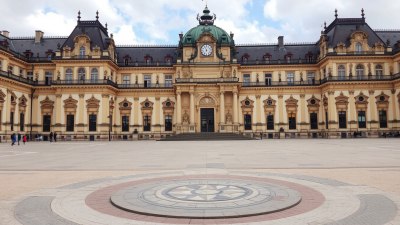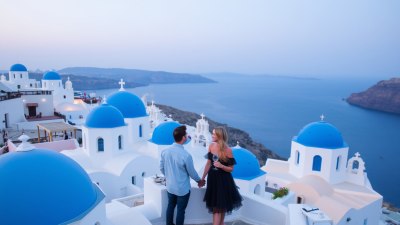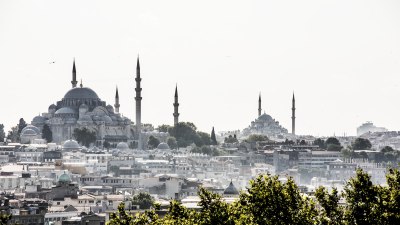Dresden’s Baroque Palaces: Exploring German Architecture
Discover the stunning Baroque palaces of Dresden, a testament to German architectural brilliance rich in history.

Image created with Flux Schnell
Dresden, a city nestled along the Elbe River in eastern Germany, is renowned for its rich history and breathtaking Baroque architecture. The transformation of Dresden during the 18th century into a Baroque masterpiece is primarily attributed to the vision of Augustus the Strong, the Elector of Saxony, who wanted to rival Paris and Florence in grandeur. This article delves into the magnificent Baroque palaces of Dresden, exploring their architectural features, historical significance, and the cultural context that shaped their designs.
One of the most iconic landmarks in Dresden is the Zwinger Palace. Designed by architect Matthäus Daniel Pöppelmann and completed in 1732, the Zwinger is an exemplary representation of Baroque architecture. Its complex houses various museums and galleries, showcasing everything from porcelain to old master paintings. The grandeur of the Zwinger is accentuated by its ornate facades, intricate sculptures, and expansive courtyards, making it a popular destination for tourists and architecture aficionados alike.
Adjacent to the Zwinger is the Semper Opera House (Sächsische Staatsoper), another gem of Baroque architecture. Completed in 1878 and designed by the architect Gottfried Semper, the opera house exhibits an unrestrained elegance that captivates visitors. The building is renowned for its lavish interior decor, featuring a magnificent auditorium adorned with frescoes, chandeliers, and opulent seating. The Semper Opera House remains a cultural hub of Dresden, hosting world-class performances and events that draw audiences from around the globe.
The Dresden Castle (Dresdner Residenzschloss), a former royal palace, provides a glimpse into the opulence of Saxon royalty. Although its architectural style has evolved through various periods, numerous Baroque elements still characterize its appearance. The palace's exterior is a harmonious blend of Renaissance and Baroque styles, while its interior showcases lavish halls filled with precious artifacts, including the famous Green Vault, which houses an exquisite collection of treasures and jewelry. The castle is a testament to the power and wealth of the Saxon dynasty and serves as a reminder of Dresden's illustrious past.
Another notable Baroque structure in Dresden is the Church of Our Lady (Frauenkirche). Originally completed in 1743, the church is famous for its majestic dome, which dominates the skyline of Dresden. The church exemplifies the grandeur of Baroque architecture through its elaborate design, intricate carvings, and stunning frescoes. Tragically, the church was destroyed during World War II but was painstakingly reconstructed and reopened in 2005. Today, the Frauenkirche stands as a symbol of peace and reconciliation, attracting thousands of visitors each year.
To truly appreciate the architectural intricacies of Dresden's Baroque palaces, one must consider the cultural movements that influenced their designs. The Baroque period was marked by a reaction against the restrained aesthetics of the Renaissance, embracing grandiosity and emotional expression instead. Architects sought to create environments that evoked awe and a sense of the divine, often employing dramatic contrasts of light and shadow within their designs.
The playful ornamentation and elaborate sculptures that adorn many of Dresden's palaces also reflect the artistic trends of the Baroque era. Prominent artists and sculptors collaborated with architects to enhance the visual splendor of these structures, creating a cohesive work of art that tells a story about the city's heritage and culture. Visitors can witness this artistic synergy firsthand while exploring the various palaces and their surrounding gardens.
Beyond their architectural brilliance, Dresden's Baroque palaces also served as important cultural and political centers during their time. The royal court was a hub of artistic patronage, fostering the development of music, literature, and the visual arts. Composers such as Johann Sebastian Bach thrived in this vibrant environment, producing some of their most significant works. As such, the palaces were not just beautiful edifices but also vital spaces for cultural exchange and development.
The gardens surrounding these Baroque palaces are equally important, reflecting the principles of landscape design that emphasized symmetry and order. The Great Garden (Großer Garten) in Dresden is one of the largest and most famous parks in the city, laid out in the 17th century, characterized by its orderly layout and manicured lawns. Visitors to the gardens can immerse themselves in the natural beauty while also appreciating the architectural backdrops of the palaces. Numerous sculptures and fountains are scattered throughout the gardens, further enhancing their appeal.
Visiting Dresden today, one can witness the resilience and vibrancy of the city, despite the tumultuous history it has endured. The reconstruction efforts following World War II played a crucial role in restoring Dresden's Baroque heritage. The meticulous work undertaken by skilled craftsmen and artisans ensured that the essence of the original designs was preserved, even as they adapted to the modern context.
The blend of past and present is particularly evident in how Dresden has re-emerged as a cultural beacon in Germany. While the historical significance of its Baroque architecture is undeniable, the city has also embraced contemporary influences, resulting in a dynamic architectural landscape. Visitors can explore the juxtaposition of traditional Baroque structures with modern designs, experiencing the evolution of Dresden as a living city that honors its roots while looking toward the future.
One can easily spend days exploring Dresden's Baroque palaces and surroundings. Guided tours and self-guided walks provide insights into the architectural elements, historical context, and significant events that shaped these magnificent structures. Many guided tours offer themed experiences, focusing on either the artists who contributed to the palaces’ designs or the historical significance of particular events that took place within their walls.
Moreover, the city often hosts cultural events, exhibitions, and concerts in its ornate palaces and gardens, allowing visitors to appreciate the interplay between art, architecture, and history. The annual Dresden Music Festival, for example, takes place across various venues, including the Semper Opera House, drawing international artists and audiences. These events breathe life into Dresden's Baroque heritage, inviting people to celebrate and engage with the city’s cultural narrative.
Dresden's Baroque palaces not only represent architectural feats of the 18th century but also encapsulate the rich history, culture, and spirit of the city. The Zwinger, Semper Opera House, Dresden Castle, and Frauenkirche stand as monumental tributes to the artistic and cultural aspirations of their time. They continue to inspire awe in visitors today and serve as vital links to the city's past. As we explore these architectural wonders, we are reminded of the power of resilience and the enduring nature of beauty in its many forms.











